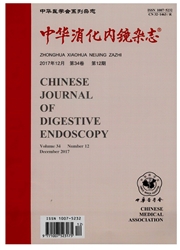

 中文摘要:
中文摘要:
目的了解2009年至2015年7年间浙江省32个县市幽门螺杆菌(册’)抗生素耐药分布情况,建立耐药大样本数据引导下的智能给药模型,实现大数据和精准医疗的有机结合。方法以县市为单位,分别统计2009年至2015年间浙江省58家医院534657例临床样本月P对不同抗生素的耐药率。通过建立O-1规划模型,并采用遗传算法对模型进行求解,获得不同地区大样本数据指导下的最佳给药抗生素组合。结果浙江省32个县市HP克拉霉素和左氧氟沙星耐药率存在显著性差异,左氧氟沙星耐药率明显高于克拉霉素。依据不同地区抗生素耐药背景,建立了一套地区抗生素耐药背景下的智能给药模型。结论浙江省地域及人群间HP耐药性差异可作为中国抗生素耐药背景下HP根除策略的参考。基于人群月P耐药监测的拓展应用及其潜在的卫生经济学意义应当受到重视。
 英文摘要:
英文摘要:
Objective To combine clinical big data and precision medicine by investigating the antibiotic resistance rates of Helicobacter pylori (liP) and establishing the mathematical model for antibiotic selection based on the resistance data from 2009 to 2015 in 32 cities and counties in Zhejiang province. Methods The resistance rate of 534,657 HP samples were analyzed from 58 hospitals in Zhejiang province from 2009 to 2015. The best combination of antibiotics by establishing O-1 mathematical model, function cal- culation and roulette algorithm was obtained with city or county as a statistical unit. Results There were sig- nificant differences in clarithromycin and levofloxacin resistance rates among 32 cities and counties in Zhejiang province, with levofloxacin resistance significantly higher than that of clarithromycin. The mathematical model for antibiotic selection was established based on local antibiotic resistance data. Conclusion In the background of antibiotic resistance in China, the antibiotic resistance differences in different counties and populations in Zhejiang province can be a reference for HP eradication. Population-based antibiotic resistance detection and its potential of health economics is worth more attention.
 同期刊论文项目
同期刊论文项目
 同项目期刊论文
同项目期刊论文
 期刊信息
期刊信息
